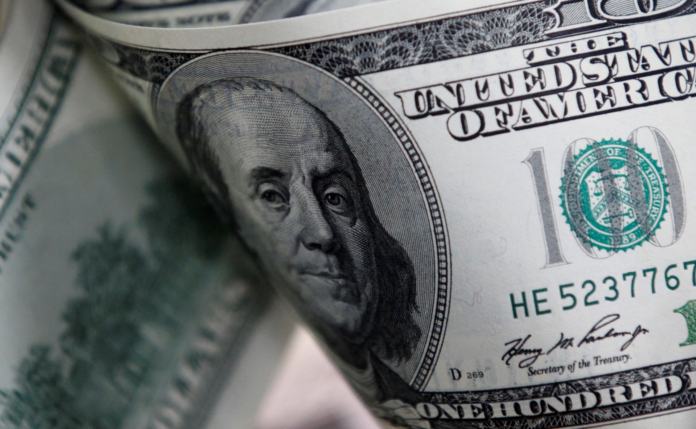The dollar is set for its first weekly gain since mid-March on Friday, after China granted some tariff exemptions for U.S. imports.
This raised hopes that the trade war between the world’s two largest economies might be closer to de-escalating. The U.S. currency experienced significant fluctuations this week, driven by mixed signals regarding the thawing of relations between Washington and Beijing.
On Tuesday, U.S. President Donald Trump suggested that talks between the two nations were progressing and that a de-escalation of their tariff dispute was underway.
By Friday, businesses had been informed that China had granted exemptions from its 125% tariffs on some U.S. imports, and China was asking companies to identify goods eligible for these exemptions. Trump, in an interview with Time magazine, confirmed that his administration was in discussions with China to reach a tariff deal, and that Chinese President Xi Jinping had contacted him.
However, Beijing continues to dispute the U.S. characterization of the talks.
As a result of the developments, the dollar rose against a basket of currencies, up around 0.1% on the day and set for a modest weekly gain of 0.3%, marking its first increase since mid-March. While the situation remains uncertain, some market participants felt that tensions between the U.S. and China were easing, with a move toward de-escalation rather than further escalation.
Despite these signs of progress, uncertainty over the broader economic impact of the trade conflict and tariff policies kept investors cautious. The dollar had dropped 4% since Trump first announced his “Liberation Day” tariffs on April 2, and while there was some recovery, the dollar’s recovery was still not secure enough to fully reverse the outflows.
Meanwhile, safe-haven currencies like the yen and Swiss franc saw modest gains against the dollar, while the euro and pound both weakened slightly. Trump’s early-week comments about firing Federal Reserve Chair Jerome Powell caused initial pressure on the dollar, but it rebounded after he clarified his position, stating he had no intention of replacing Powell.
The U.S. has also made some progress in trade talks with Asian allies South Korea and Japan, though currency concerns remain an issue. Japan’s finance minister, Katsunobu Kato, confirmed after meeting with U.S. Treasury Secretary Scott Bessent that there were no discussions about currency targets.
Trump has previously accused Japan of weakening its currency to benefit its exporters. Japan’s chief negotiator, Ryosei Akazawa, will continue trade discussions with Bessent next week.
Although there are signs that tariff rates might ease, concerns remain about the potential impact on U.S. economic growth, leading to expectations of continued volatility in currency markets and pressure on equity markets. Bank of Japan Governor Kazuo Ueda reiterated the central bank’s commitment to raising interest rates if inflation moves towards the 2% target but acknowledged that the fallout from U.S. tariffs would need to be closely monitored.






















